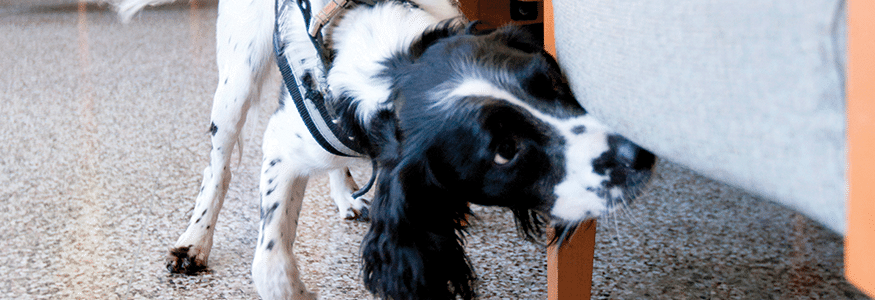
The Dogs Who Can Sniff C. diff
Clostridioides difficile infection (CDI) occurs when the Clostridioides difficile – commonly referred to as C. difficile, or C. diff – bacterium grows out of control in the gastrointestinal tract. C. diff bacteria produce toxins that harm the gut, causing a range of often debilitating symptoms. These include liquid diarrhea, dehydration, fever, appetite loss, and abdominal pain. In very severe cases, CDI can be fatal. To make matters worse, CDI often affects individuals who already have compromised health. The most common sources of C. diff infection are hospitals and long-term care facilities. Patients often develop the infection after going to one of these settings to receive treatment for another ailment. The C. diff bacterium and its spores are found in high amounts in feces of infected people, and they can then spread the infection to surfaces, such as food or other objects, if they don’t wash their hands properly after using the toilet and if proper cleaning protocols are not in place in healthcare facilities.
In addition, C. diff spores are very difficult to eradicate. Normal cleaning solutions and hand sanitizers are usually not enough to destroy C. diff, but there are more effective methods available, such as specially-designed chemical cleaning agents and ultraviolet light. The problem is that these special cleaning methods are too costly to use unless necessary.
To combat these issues, a team from Vancouver General Hospital, Canada’s second largest hospital, have developed a clever solution.1 They created a program that trains dogs to use their keen sense of smell to detect C. diff bacteria in hospital and other healthcare settings. They started in 2016, with one dog on staff, but they have been continuing to train other dogs. Currently, there are two dogs fully trained in the program, Angus and Dodger.
According to the Vancouver Coastal Health, these dogs can identify C. diff contamination with a 97% accuracy. This allows hospitals and other healthcare facilities to then go in and use adequate decontamination protocols to remove the bacteria and spores, creating a safer environment for both patients and healthcare workers.
While they are based within Vancouver General Hospital, they travel to other healthcare facilities across Canada to offer C. diff detection using their dogs.
The program claims that there are four primary benefits to using dogs to detect C. diff:
- Enhance surveillance measures. This method of diff detection is cost effective, shows quick results, and can be used to monitor the status of contamination.
- Increase staff engagement. Since the dogs can detect diff on the spot, it allows staff to receive real-time alerts, which can lead to opportunities for feedback and education.
- Improve practices. The program helps to highlight where different facilities have gaps in their cleaning protocols, and they can then use this knowledge to improve healthcare.
- Reduce environmental contamination. The primary benefit is of course that it reduces the spread of CDI to patients and healthcare workers.
This exciting program, along with the new technologies created to eliminate the bacteria and spores, such as using ultraviolet light to sanitize surfaces, could lead to a future where patients who go into the hospital for another ailment no longer have to worry about contracting a dangerous C. difficile infection. To learn more about this program, go to www.vch.ca.
Note: while this program is very successful, some other sites that use dogs to detect C. diff are not quite as accurate. More research should establish which specific training methods and dog breeds are most effective for use in other jurisdictions.















